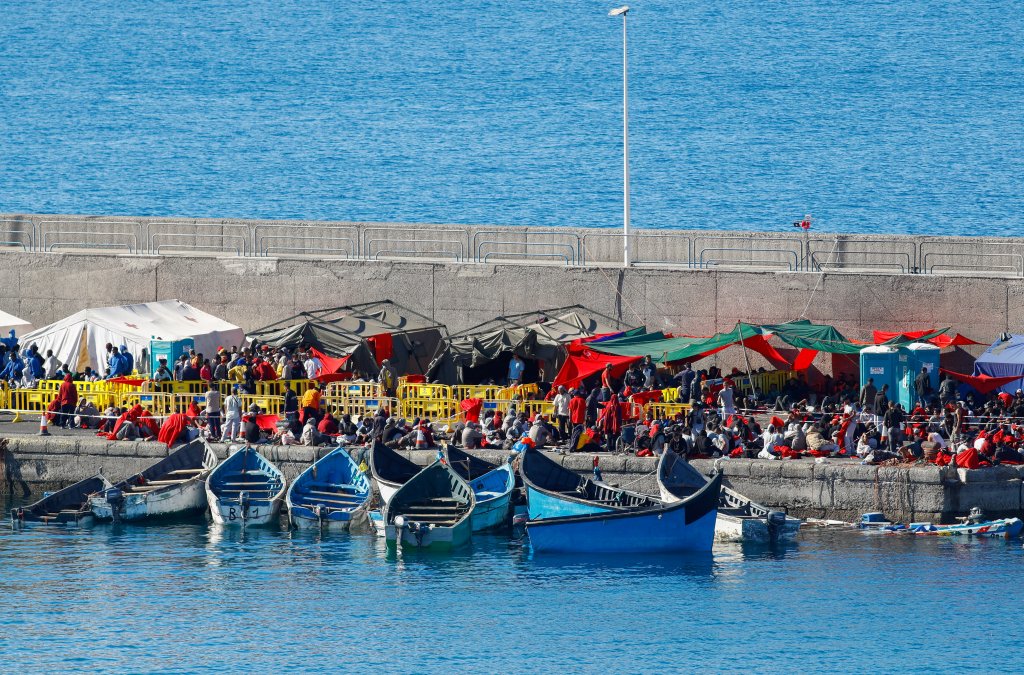Senegalese nationals wishing to travel through a Spanish airport will need to show a transit visa from next month. The move comes as Madrid airport's facilities have become crowded with asylum seekers waiting to be processed.
Spain's embassy in Senegal announced on Wednesday (January 24) that new rules will be introduced next month requiring Senegalese travelers to hold a transit visa if their journey includes a layover at a Spanish airport. The rules are set to come into effect on February 19. A similar visa requirement for Kenyan nationals passing through Spanish airports came into effect at the weekend.
Since August 2023 there has been an "exponential rise" in the number of people claiming asylum at Madrid airport, according to the Spanish Refugee Aid Commission, CEAR. As a result, rooms being used to hold people have become extremely overcrowded.
"More than 390 people (are being housed) in undignified and inhuman conditions," said CEAR in a recent statement. "The overcrowding and unsanitary conditions have reached critical levels, causing outbreaks of bedbugs, garbage to accumulate and a shortage of towels for personal hygiene," it continued.
CEAR also complained about delays in processing asylum claims, saying around 182 people, mostly from Senegal, Morocco, Somalia, Venezuela, and Colombia, have not been able to formalize their asylum claims.
Closing a loophole
According to the news agency AFP, the new visa requirement comes after weeks of complaints from police unions that "many Senegalese passport holders", supposedly on their way to Brazil, have requested asylum while on a layover in Madrid. For Senegalese nationals wishing to leave their country and seek international protection in the EU, this appears to be a loophole, which Spain is now trying to close.
More people than ever before applied for protection in Spain last year, with 152,250 applications between January and the end of November. Most had to make irregular and dangerous journeys by sea to reach Spanish territory, because of the lack of authorized ways to enter the country without a visa.

Like many other asylum organizations, CEAR is calling for an established humanitarian route or visa that would allow people to claim asylum on Spanish soil.
But the Spanish government has instead focused on preventing migrant arrivals, largely by cooperating with countries of origin and transit including Morocco, Senegal, Mauritania and Gambia. Earlier this month Spain’s interior minister said accords with African countries had prevented over 27,000 migrants from reaching Spain in 2023.
Also read: Spain: Migration routes became busier in 2023
In Senegal, worsening violence, political unrest, and unemployment are among several factors causing growing numbers of people to leave the country. Many of those who reached the Canary Islands during a period of record high traffic on the route from West Africa last year came from Senegal.
With AFP
